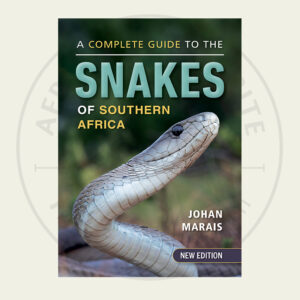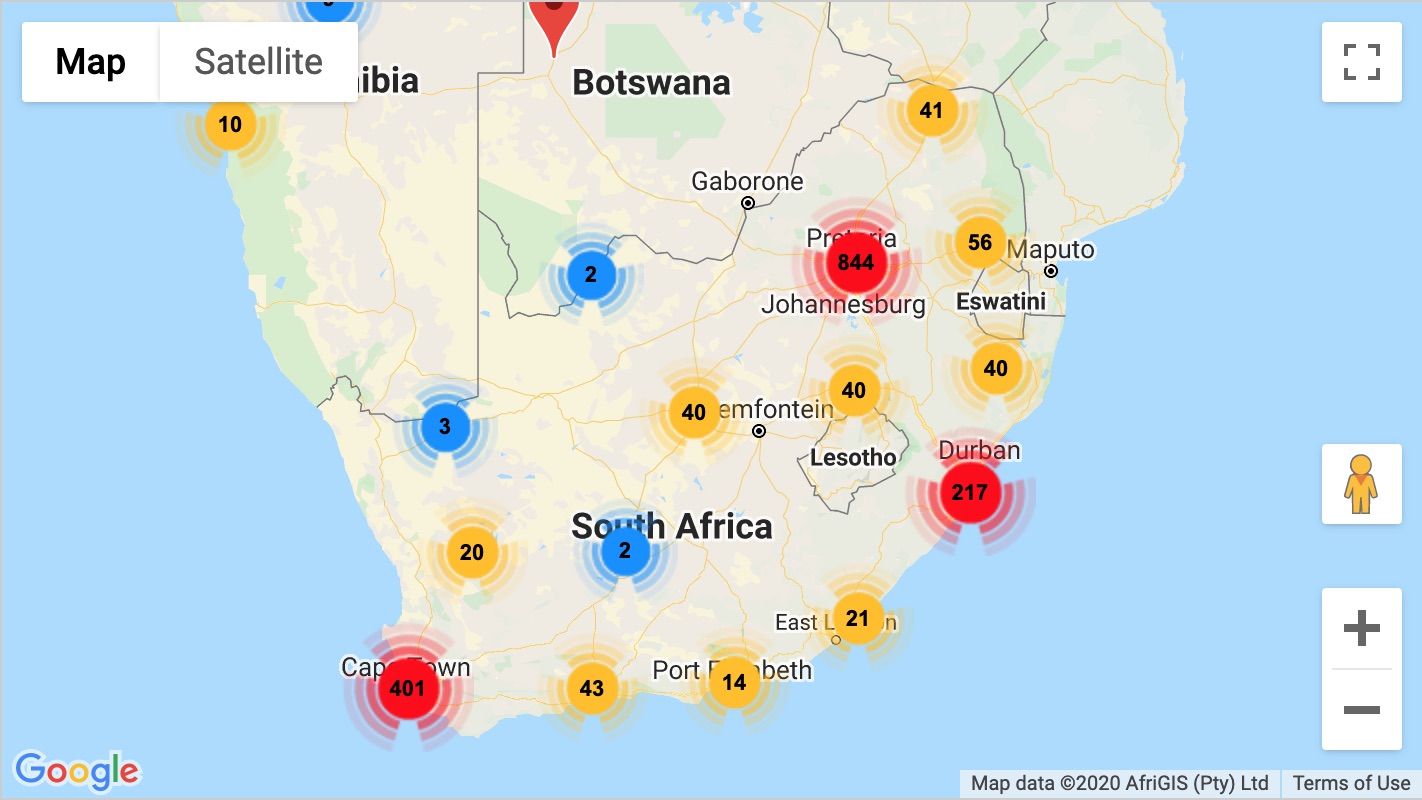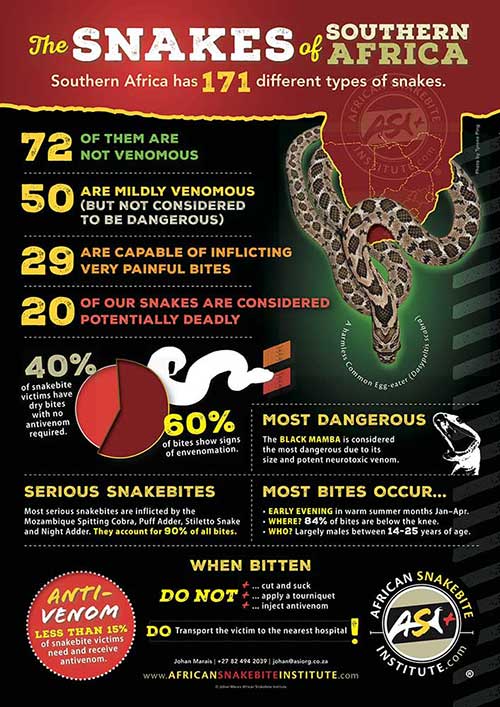PLEASE NOTE. Our offices will be closed from the 12th of December 2025 – until the 5th of January 2026. Last date for orders will be the 8th of December 2025. Any orders placed after the 8th of December 2025, will only be dispatched after the 5th of January 2026.
Common Scorpions of Mozambique
Mozambique has a variety of scorpion species, and scorpion stings are quite common. Scorpions are nocturnal by nature and emerge at night to hunt for insects. They tend to hide during the day, and are frequently found under the bark of trees, beneath logs and rocks and sometimes in the house. This is a problem for farmers who are out in the lands and have a higher chance of encountering scorpions whilst working.
Only one scorpion in Mozambique is considered highly venomous and has caused deaths in humans. A few other species can give incredibly painful stings but are not life-threatening. The majority of species are mildly venomous, and the sting is slightly more painful than a bee sting, that fades after a few hours.
Scorpions are beneficial to farmers, as they eat insects that would otherwise damage crops. There is a simple way to determine if a scorpion is dangerous or not. Scorpions with large pincers and thinner tails are lesser venomous species. These scorpions use their large pincers to crush prey and don’t need a strong venom. Scorpions with small pincers and thicker tails are the more venomous species and give a painful sting.
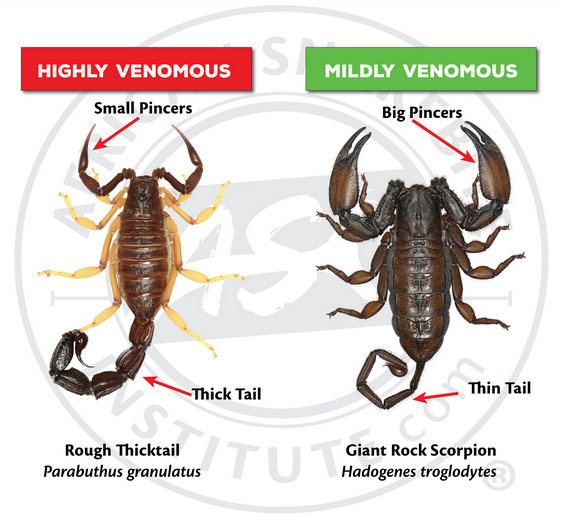
There are a number of scorpions in Mozambique but below are the six most commonly encountered types:
Transvaal Thicktail Scorpion (Parabuthus transvaalicus) – Highly venomous
This is a large dark scorpion with a thick tail, which can reach 12 cm in total length. They are often abundant and can be found hiding beneath rocks and rubble or equipment. The sting is incredibly painful, and victims should be treated in a hospital. The venom may cause the muscle around the lungs to become paralyzed, and there have been human deaths recorded from this scorpion. Death can take 1-5 days to occur.
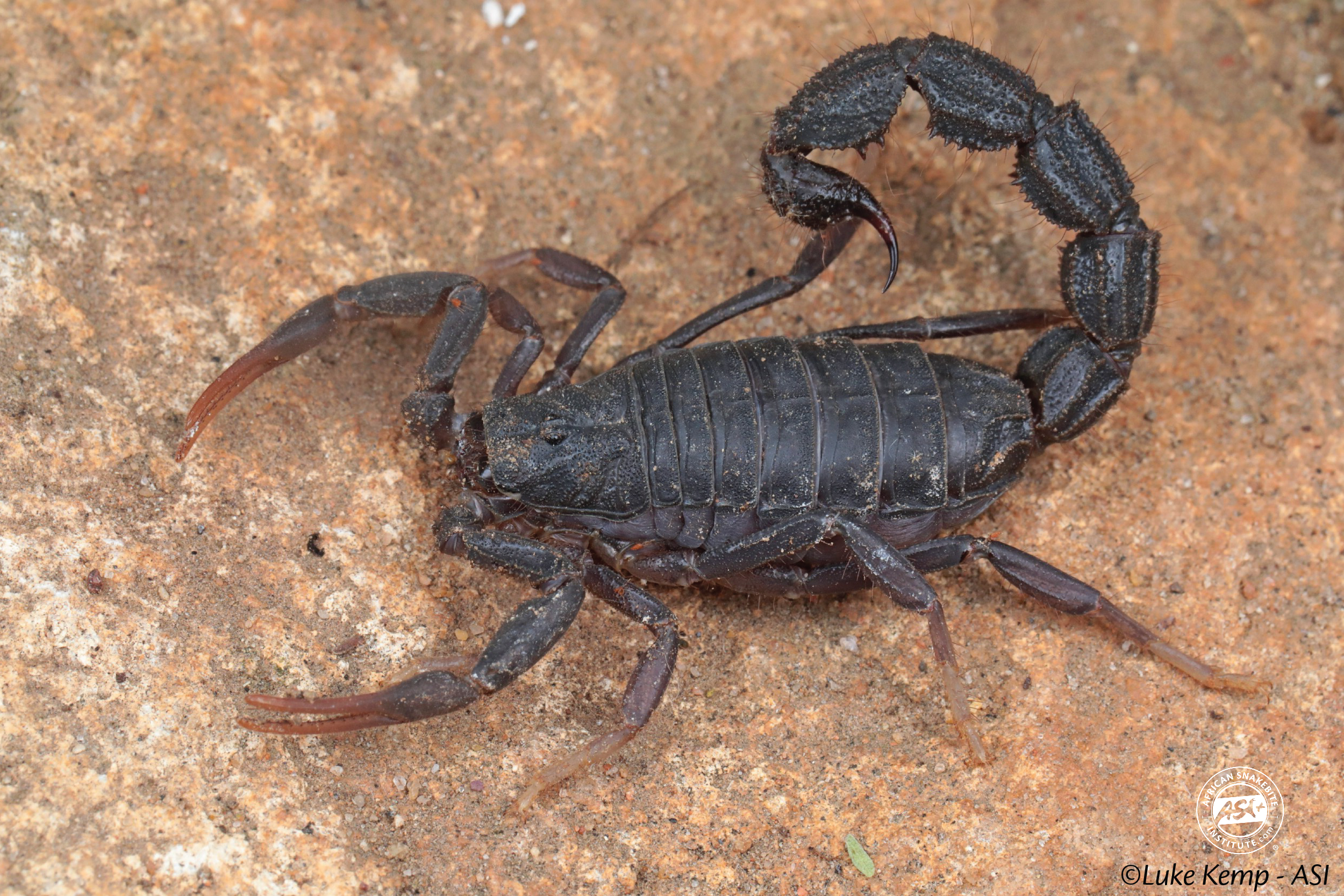 The Transvaal Thicktail Scorpion is a large scorpion and easily identified by the large tail and dark colour.
The Transvaal Thicktail Scorpion is a large scorpion and easily identified by the large tail and dark colour.
Mozambique Thicktail Scorpion (Parabuthus mossambicensis) – venomous
A large orange to yellow scorpion with a thicktail that can reach a length of 7 cm. They are often actively seen moving at night but may be found beneath rubble, rocks or logs during the day. Stings are incredibly painful and are often sensitive for a couple days. These scorpions are not known to be lethal to humans, but stings in children should be treated in hospital.
 The Mozambique Thicktail Scorpion is easily identified by the large tail and yellow to orange colour.
The Mozambique Thicktail Scorpion is easily identified by the large tail and yellow to orange colour.
Speckled Pygmy Thicktail (Afrolychus burdoi) – mildly venomous
A small scorpion of around 3 cm in length. Colour is yellowish with dark speckles. These scorpions are commonly found in leaf-litter or beneath logs and under the bark of dead trees. Stings are painful and the sting site is often sensitive for a few days.
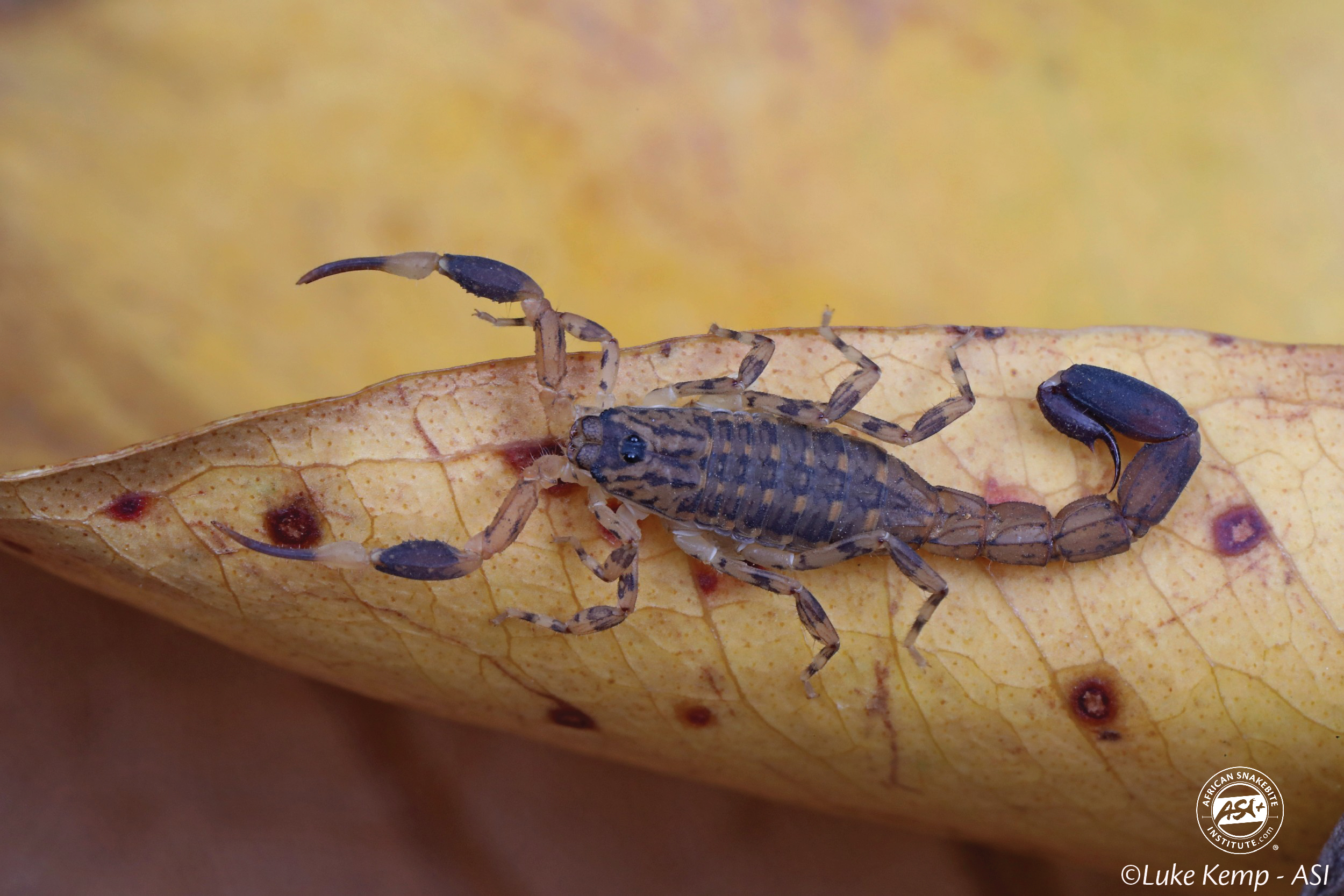 The Speckled Pygmy Thicktail is a small scorpion often found in leaf litter beneath trees.
The Speckled Pygmy Thicktail is a small scorpion often found in leaf litter beneath trees.
Chubb’s Lesser Thicktail (Uroplectes chubbi) – mildly venomous
A small yellow scorpion with dark patterns on the back. These scorpions are around 3.5 cm in length. They are frequently found in leaf litter and beneath logs and rocks. They are also found in the house and may hide in clothes and bedding. The sting is painful but fades after a few hours.
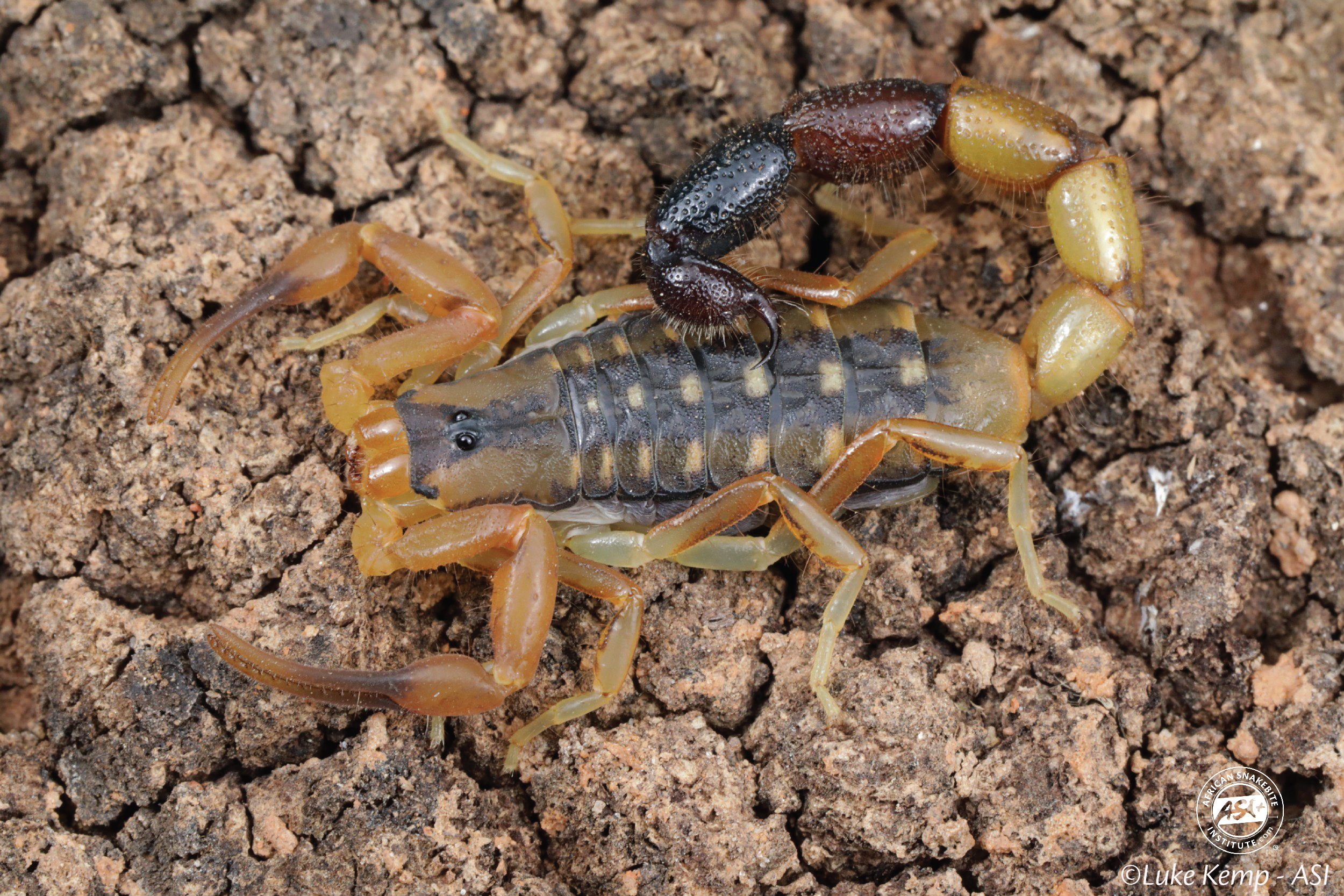 Chubb’s Lesser Thicktail is a small scorpion with notably dark segments at the end of the tail.
Chubb’s Lesser Thicktail is a small scorpion with notably dark segments at the end of the tail.
Rough Burrowing Scorpion (Opistophthalmus glabrifrons) – mildly venomous
A common large scorpion with big pincers. They live down burrows but will emerge at night to hunt insects. Colour is yellowish to brown with lighter legs. They are often stood on at night. Stings are painful but the pain will fade after a few hours.
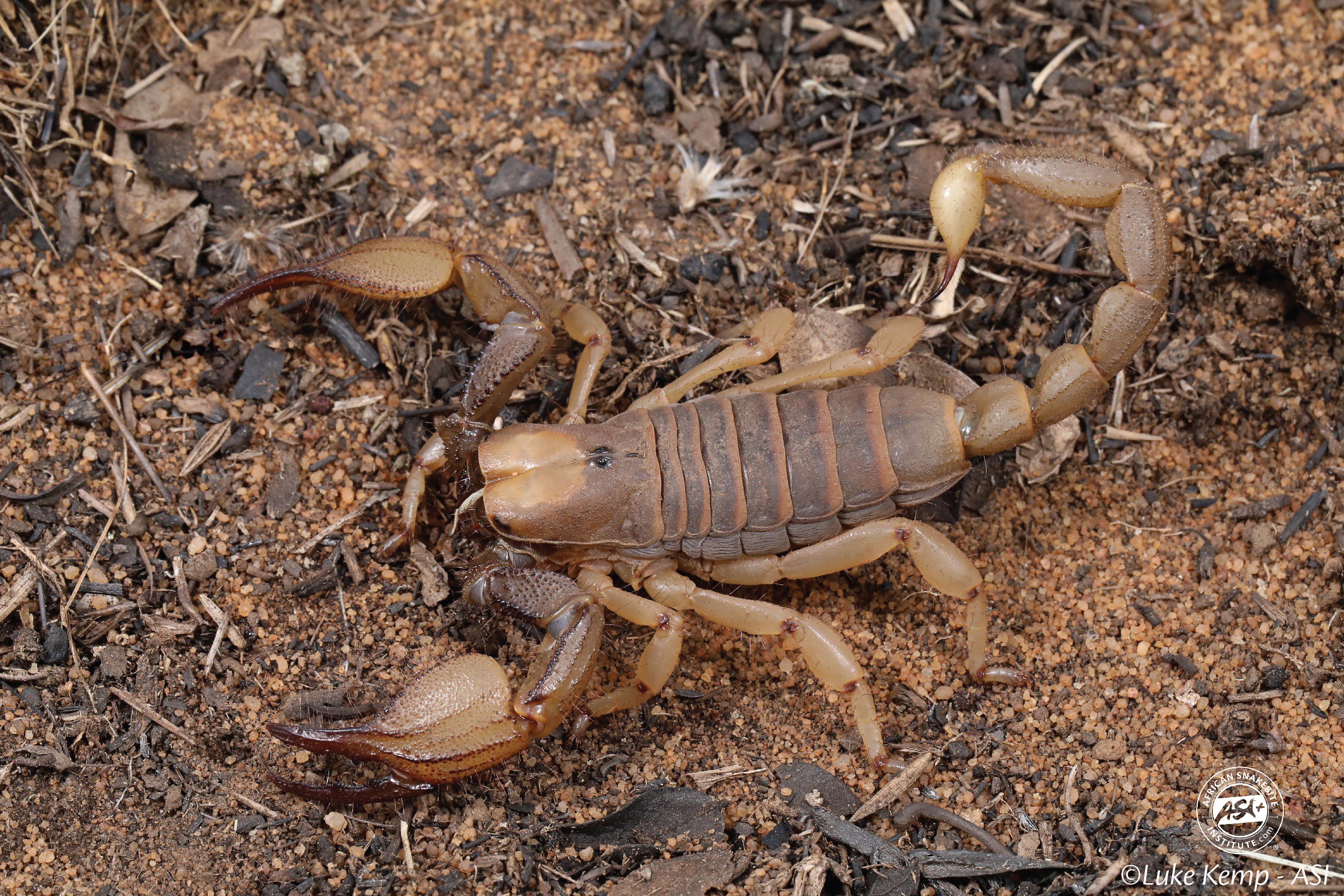 The Rough Burrowing Scorpion is a large scorpion with big pincers. It may be seen active at night, especially after decent rain.
The Rough Burrowing Scorpion is a large scorpion with big pincers. It may be seen active at night, especially after decent rain.
Tree Creeper (Opisthacanthus asper) – mildly venomous
A common scorpion that lives under the bark of trees. They are black, often with lighter orange legs. This scorpion has large pincers with a thin tail. They are often seen active on trees at night or climbing onto buildings. Stings are painful but fade after an hour.
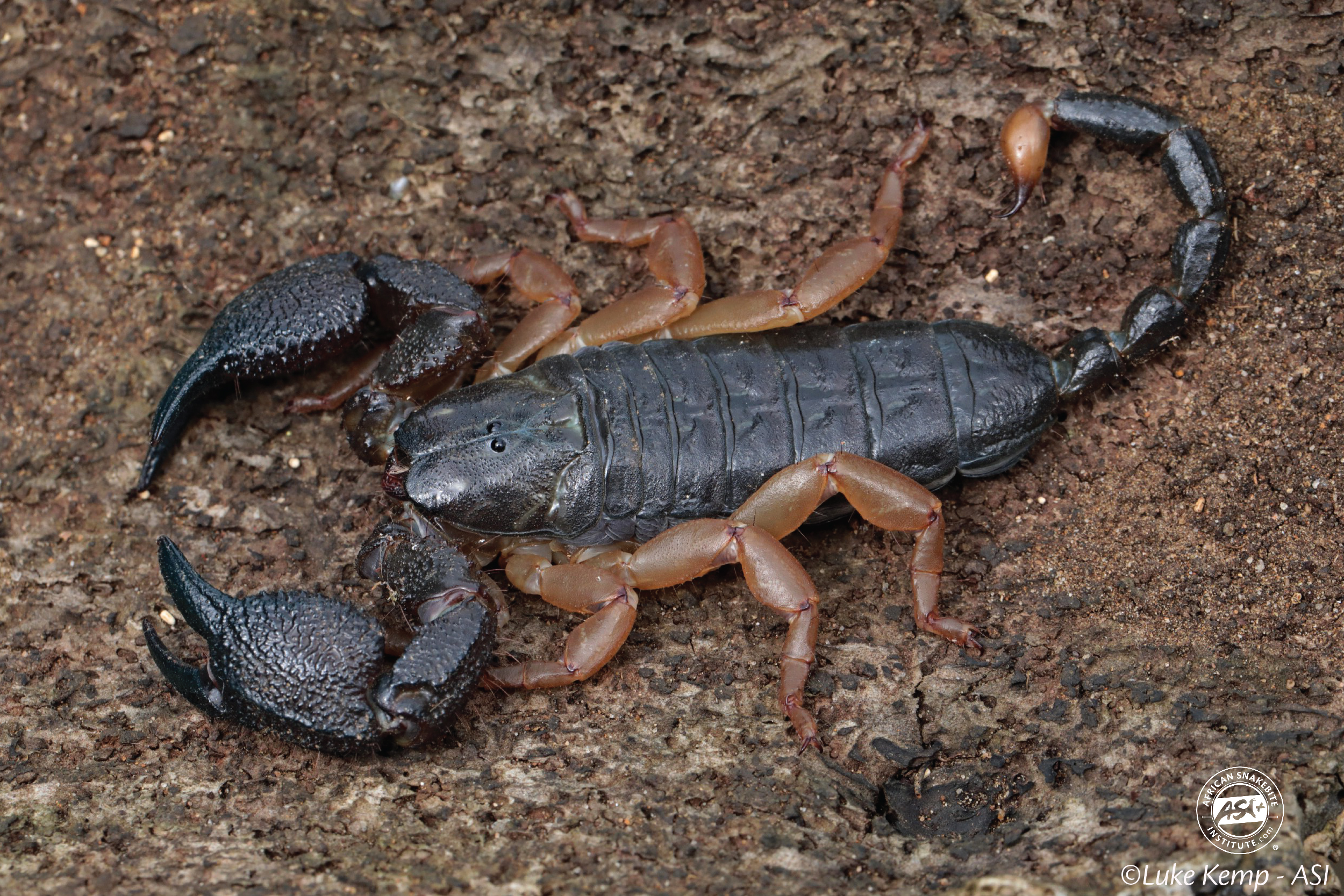 The Tree Creeper lives beneath the bark of dead trees and logs. They may occasionally be found on walls inside buildings.
The Tree Creeper lives beneath the bark of dead trees and logs. They may occasionally be found on walls inside buildings.
Stings by most scorpions are painful, but the pain fades after a few hours. For highly venomous species it is best to keep the victim immobile and transport them to a hospital as soon as possible. Some people suggest applying ice to the sting, however scorpion venom often makes the sting site hypersensitive, and ice may cause additional pain. Some painkillers or anesthetic ointment can be taken for the sting. The majority of stings are not dangerous, and the person should be fine within a few hours.
It is a always best to try avoid scorpion stings as far as possible. If walking around at night, wear closed shoes and use a torch to spot scorpions on the ground. Be careful when picking up rocks or logs and branches, as scorpions like to hide under these. It’s advisable to learn how to identify local species, to avoid unnecessary stress (and trips to the hospital) when stung by the lesser venomous species. You can use the free ASI SNAKES app to see scorpions of southern Africa including southern and central Mozambique.
Search
Shopping Cart
CONTACT US:
Product enquiries:
Caylen White
+27 60 957 2713
info@asiorg.co.za
Public Courses and Corporate training:
Michelle Pretorius
+27 64 704 7229
courses@asiorg.co.za


